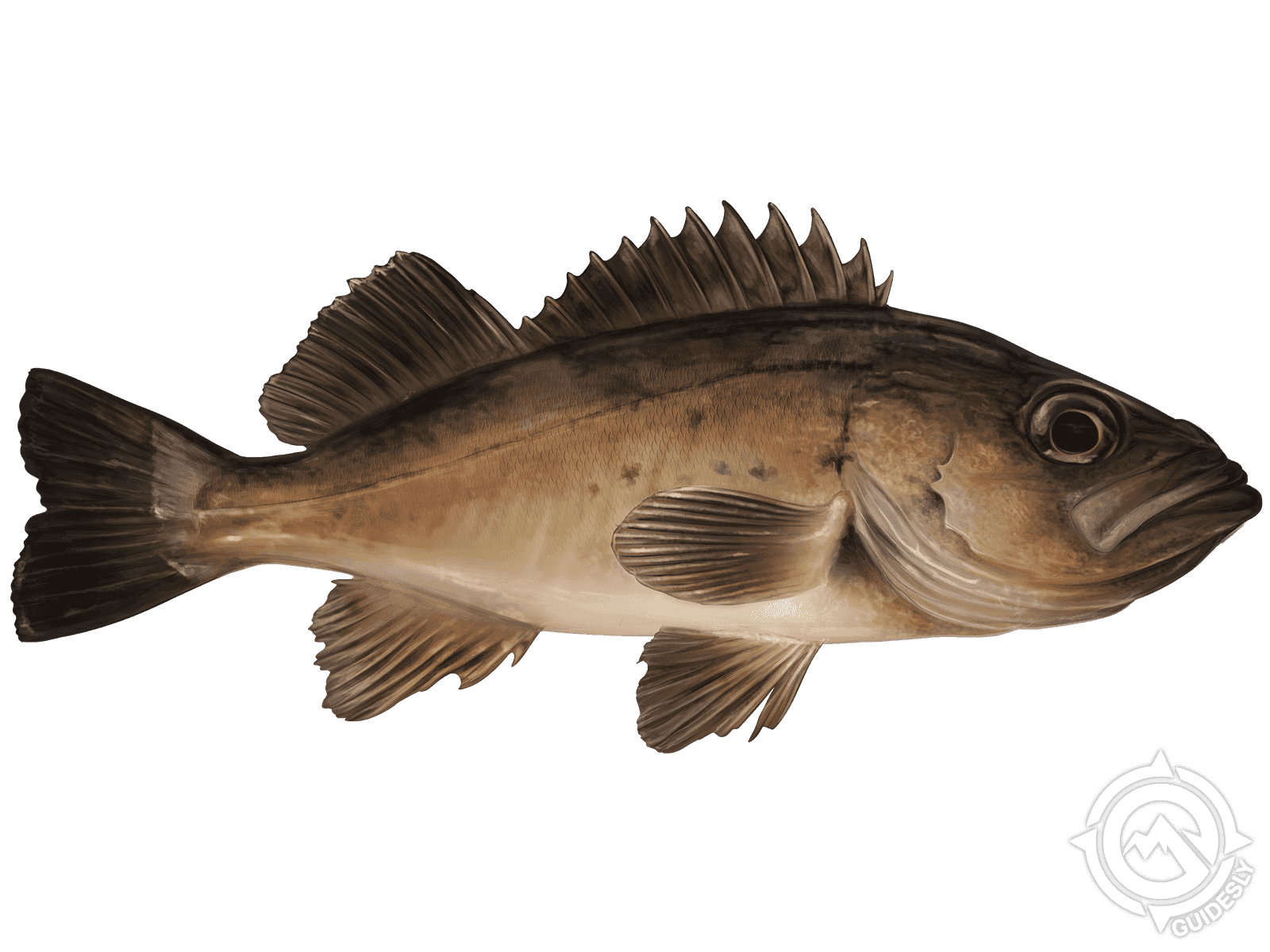Black Rockfish

Species Details
Sebastes Melanops
Sebastidae
Scorpaeniformes
Nearshore, Offshore
2 - 11 lbs.
8" - 25"
Black Rockfish (Sebastes melanops) Fish Description
The Black Rockfish is named as such due to its mostly dark gray to black color with some lighter tones of gray on the sides of its body; although it tends to become lighter in color as they get older, with some even turning almost completely white with age. Its body is somewhat shaped like a bass but a bit thicker and the fins much spinier. The spines of the Black Rockfish, particularly on its dorsal and anal fins, are also a bit venomous. Although its spines aren’t that toxic to be fatal, they can still inflict excruciating pain as well as cause infection. Another distinguishing feature of a Black Rockfish is its large mouth. It uses its mouth that allows the fish to inhale or suck in their prey whole.
Speaking of prey, the Black Rockfish is one of the most adept predators in the sea. It mainly feeds on smaller fishes such as herring and sand lance as well as other benthic sea creatures, including small crustaceans and octopi. Depending on food availability, it may also wander out of its natural habitat to look for food. That’s why even though they are known to be pelagic and live along continental shelves or nearshore, shallow water, and rocky areas, they can often be seen in various habitats. They have even been seen schooling with other species, including yellowtail, widow, or dusky rockfish.
Like most rockfish, the Black Rockfish is also viviparous, which means that instead of laying eggs, they give birth to live planktonic larvae. Every spawning season they produce a whopping number of eggs amounting to around 125,000 to 1,200,000 eggs. After mating, the females tend to store the sperm for months until the eggs fertilize. Between January to May, they would finally give birth to the larvae in the open water. The larvae would just with the water for months until they’re big and strong enough to swim back to their natural habitat and hunt for food themselves.
Black Rockfish Interesting Facts
- The biggest Black Rockfish ever caught measures a little over two feet and weighs around eleven pounds.
- They have been known to live up to fifty years.
- They are often confused with Blue Rockfish because of their rather similar appearance.
- They fertilize their eggs internally.
- Females can produce between 125,000 and 1,200,000 eggs in a single mating season.
- Females store sperm for months until their eggs fertilize.
- They give birth to live planktonic larvae.
- Although adults can form schools at times, they are often seen schooling with other fish species.
- They are sometimes called Black Bass because of their bass-like shape.
- Because they don’t have a vent on their swim bladder, Black Rockfish that are caught are prone to barotrauma—an injury to a bottom-dwelling fish caused by the sudden change of pressure.
- Barotrauma can cause a landed Black Rockfish’s eyes to bulge and the innards to pop out of its mouth.
Black Rockfish Size and Swimming Speed
Adult Black Rockfish size doesn’t exceed more than two feet, weighing around four to five pounds on average. They’re not also known to be fast swimmers, although, like most fish species, they can swim a bit faster in short busts when threatened.
Black Rockfish Habitat and Distribution
The Black Rockfish is a popular gamefish in the US as they’re pretty easy to locate as well as to catch, given their aggressive feeding behavior. They are fairly common along the coasts of the Pacific—from Alaska stretching down to the coasts of Southern California. The waters of northern Baja California in Mexico are also said to be abundant with this species.
Although they usually inhabit rocky reefs, near jetties, and estuary structures, they can sometimes wander deeper into the ocean—even as deep as 1,200 feet. They also like hanging around areas nearshore where the currents are rough.
Black Rockfish Fishing Tips
Generally, using a medium action rod is more than enough to handle any types of rockfish—including the Black ones. This will give you enough stability and leverage to pull this bottom dwelling fish up to the surface. Pair it up with a conventional reel or bait-casting reel. You might also need something that has a sensitive tip so you’d feel the tug once the Black tries to bite your bait or lure. Speaking of baits or lures, the Black Rockfish will pretty much go after anything you would present them as they’re not known to be finicky eaters. Jigs, however, are a favorite among experienced anglers given the fish’s habitat. If you prefer live baits, anchovies, sardines, and mackerels have been said to work well in getting this rockfish to bite. Just make sure to use some sort of weight for you to be able to get your bait down below to your target’s turf.







